Welcome to the spectacular festivities of Cusco 2025! Every month of the year, the city comes alive with magic, color, culture, and history, offering a multitude of events brimming with tradition and joy. This year, we roll out the red carpet to welcome visitors from all over the world, eager to immerse themselves in Cusco’s enchanting celebrations.
In Cusco, these special days are more than just celebrations, they are a vivid expression of ancient history intertwined with modernity. During traditional festivities, the streets burst into life with dazzling parades, folkloric dances, and vibrant costumes that showcase the city’s rich cultural diversity and identity.
Throughout the year, we host events that honor ancient Incan deities, as well as festivities that commemorate historical and religious events, transforming every corner of Cusco into a grand open-air stage. From the majestic Plaza de Armas to the charming traditional neighborhoods, every space is infused with the festive spirit.
Embrace the opportunity to explore Cusco’s cultural richness and experience the warm hospitality of its people. The 2025 Cusco festivities promise an unforgettable journey, offering a deep dive into Peruvian tradition.
In this blog, we’ll guide you through the festivities of each month, helping you plan your trip and fully enjoy our culture. Don’t miss out!
- January 6th: The Epiphany Celebration
- January 20: Feast of San Sebastián
- February 27 – March 16: Carnivals in Cusco
- April 13 – 20: Holy Week
- May 3: Feast of the Cross or Cruz Velacuy
- May 19: Lord of Torrechayoc in the City of Cusco
- May 26 to 29: Lord of Qoyllurit’i
- June 19: Corpus Christi in Cusco
- June 24th: Inti Raymi
- July 15: Virgen del Carmen – Paucartambo, Pisac, and Huarocondo
- August 1st: Pachamama Day
- September 14th: Lord of Huanca
- September 30th: Saint Jerónimo
- November 1st: All Saints Day
- December 24th: Santurantikuy
- December 31st: New Year’s Eve
January 6th: The Epiphany Celebration
The Epiphany Celebration in Cusco is an iconic festivity that blends religious traditions and customs deeply rooted in the region. This event occurs every January 6 and marks the end of the Christmas season. It reenacts when the Three Wise Men Melchior, Gaspar, and Balthazar arrive in Bethlehem, the birthplace of the Infant Jesus.
The celebration begins with a vibrant procession winding through the main streets of the historic center, highlighting Cusco’s stunning colonial architecture and the ancient Incan ruins that surround the city. The Three Wise Men ride on horseback toward the nativity scene, set up in the Plaza de Armas of Cusco. They are always accompanied by traditional music, folkloric dances, and colorful attire that reflect the region’s rich cultural heritage. Participants in the procession often carry symbolic objects representing Cusco’s historical and cultural wealth, along with images of the Three Wise Men.
During the Epiphany Celebration, Cusco’s cobblestone streets are filled with bright colors and joyful energy as locals and visitors gather to take part in this special event. Upon reaching the nativity scene, an emotional religious ceremony takes place, featuring prayers, hymns, and the adoration of the Infant Jesus. This moment of reflection and devotion strengthens the spiritual bonds of the community, emphasizing the importance of faith in daily life.
As is well known, Peru is a gastronomic paradise, and the Epiphany Celebration offers endless opportunities to indulge in local delicacies. Both locals and visitors can savor the region’s authentic flavors through a variety of traditional dishes available in markets and street food stalls.
The Epiphany Celebration in Cusco is a unique event that intertwines faith with Andean cosmovision, creating a festivity that highlights the identity of this historic Peruvian city. With this celebration, we kick off a year filled with the vibrancy of Cusco’s ancient traditions, brought to life month after month through unforgettable experiences.

January 20: Feast of San Sebastián
The Feast of Patron Saint San Sebastián is a celebration that dates back to shortly after the arrival of the Spanish in Peru. During that historical period, this religious image was moved to the southern part of Cusco, becoming the protector of the Incan inhabitants of the time.
The festival held in his honor in this neighborhood is a deeply rooted tradition that blends religious and cultural elements in a vibrant and meaningful way. During the celebration, the Plaza de San Sebastián becomes the epicenter of the festivities, drawing both locals and visitors with its colorful costumes, stunning choreographies, and the opportunity to savor the region’s traditional cuisine.
January 20 is an unmissable occasion to immerse yourself in the Feast of Patron Saint San Sebastián, celebrated in the Plaza de Armas of San Sebastián, Cusco. The day begins with a grand entrance led by local authorities and stewards, followed by an impressive display of up to 25 different dances in a single day. The streets come alive with dazzling attire and energetic rhythms, while the tantalizing aromas of Cusco’s signature dishes such as Chiriuchu and roasted guinea pig invite attendees to indulge in the region’s rich gastronomy and fully embrace the festivity.
The Plaza de San Sebastián serves as the central gathering point for all the dance troupes and ensembles participating in the event. Located just south of Cusco, it is easily accessible a short 10-minute ride on a local bus from the Plaza de Armas.
This unique experience seamlessly fuses the spiritual and the celebratory, offering a spectacular audiovisual display that showcases Cusco’s cultural richness and the community’s deep devotion to their patron saint, San Sebastián.

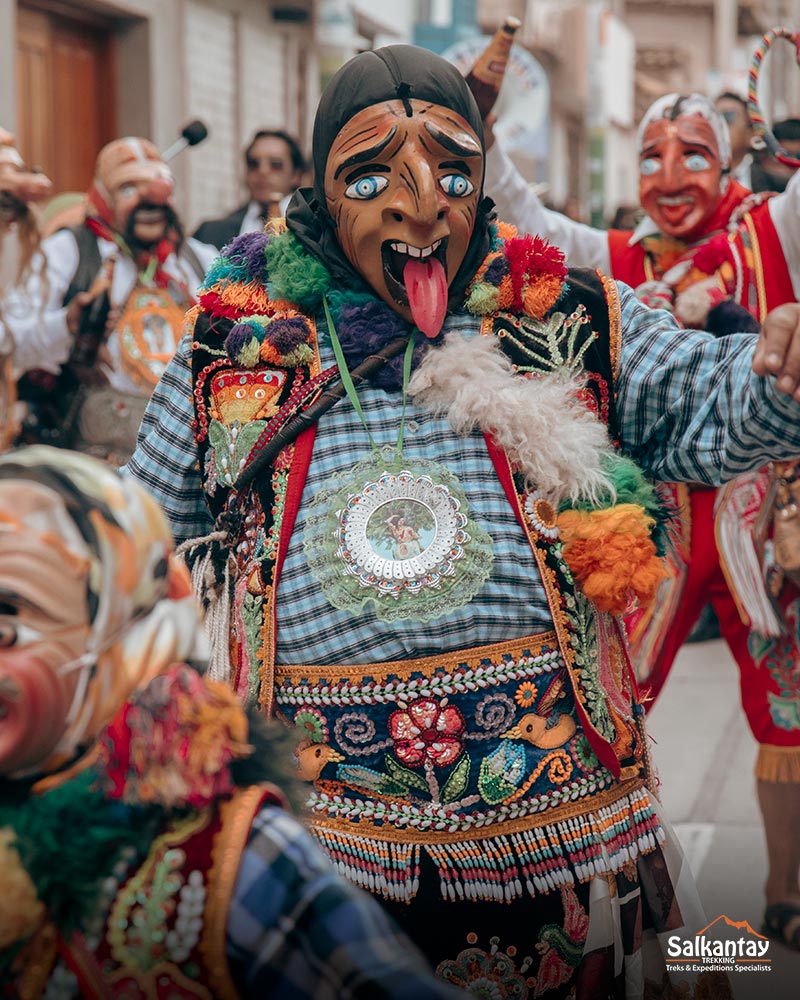
February 27 – March 16: Carnivals in Cusco
The Carnivals in Cusco are an ancient festivity celebrated in February or March, blending elements of Catholicism with Andean cosmovision. They represent a complex cultural expression encompassing fertility celebrations, gratitude to Pachamama, purification, and community unity. These elements reflect essential aspects of the culture and beliefs of the Andean peoples in the region. In Cusco, the Carnivals last for several weeks. In 2025, the main celebration will take place on March 9, although the weeks before and after are also filled with festivities.
The Yunza
The festivities begin with vibrant parades of dance troupes and floats through the city’s picturesque streets. Participants wear traditional attire that showcases the area’s rich cultural diversity, displaying a striking array of vivid colors. One of the most emblematic traditions is the “yunza”, a ritual in which a tree decorated with gifts becomes the centerpiece of the celebration. Attendees dance in a circle around the tree, taking turns striking it with a machete in an attempt to bring it down and claim one of the prizes. Families and friends usually gather on Sundays during Carnival month to partake in this joyful custom.
Compadres and Comadres Day
Another highlight of the Carnival celebrations is Compadres and Comadres Day, held on the first and second Thursday of February. These days celebrate family and friendship bonds and are distinguished by the creation of satirical effigies representing godfathers (compadres) and godmothers (comadres). These figures humorously depict local personalities, workplace figures, or even public officials, playfully exaggerating their traits to convey messages to the community, always in good humor and without offense.
The effigies are crafted using recycled materials such as cardboard boxes, plastic, bottles, old clothing, and worn-out shoes. Once completed, they are displayed on poles or high places for greater visibility. On the day of the celebration, you’ll find these effigies outside markets, shops, businesses, museums, schools, and other public spaces.

Water and Color Battles
One of the most exhilarating aspects of Cusco’s Carnival is the playful water, talcum powder, and colored confetti battles symbolizing purification and renewal filling the city streets with joy and vibrant hues. After the main day (March 9), the festivities continue with the “Kacharpari” or Carnival Octave, celebrated a week later (March 16) in Cusco’s Plaza de Armas. This grand finale features traditional dances, water games, foam fights, and a feast of delicious festival dishes, marking the official end of the celebration.
Get ready for battle! If you plan to visit the Plaza on the main day, wear comfortable clothes that can get wet because you will get soaked! Stock up on “ammunition” for the water and foam war. Around the Plaza de Armas, vendors sell foam spray, water balloons, and colorful paint. Wearing sunglasses is a foolproof strategy to protect your eyes and gain the upper hand in playful combat.
And since no celebration in Peru is complete without a grand feast, you simply cannot miss the renowned Timpu or Puchero. This exquisite dish consists of boiling a variety of meats and then adding whole cabbage leaves, potatoes, moraya (dehydrated potatoes), chickpeas, and rice. In a separate pot, sweet potatoes, peaches, pears, and yucca are cooked. Both components are served separately, similar to sancochado, but with the ingredients traditionally covered by a cabbage leaf.
Another must-try delicacy is Kapchi, a refreshing dish made with fava beans, onions, and potatoes, all seasoned with milk and cheese. It is often enriched with mushrooms and served alongside rocoto relleno (stuffed spicy pepper) and rice—another signature dish of the Carnival festivities.
Finally, there’s frutillada, a traditional beverage made from chicha de jora (fermented corn beer) infused with strawberries, cinnamon, and hierbaluisa (lemongrass). After fermenting for eight days, it transforms into a delicious drink, typically served with sugarcane aguardiente.
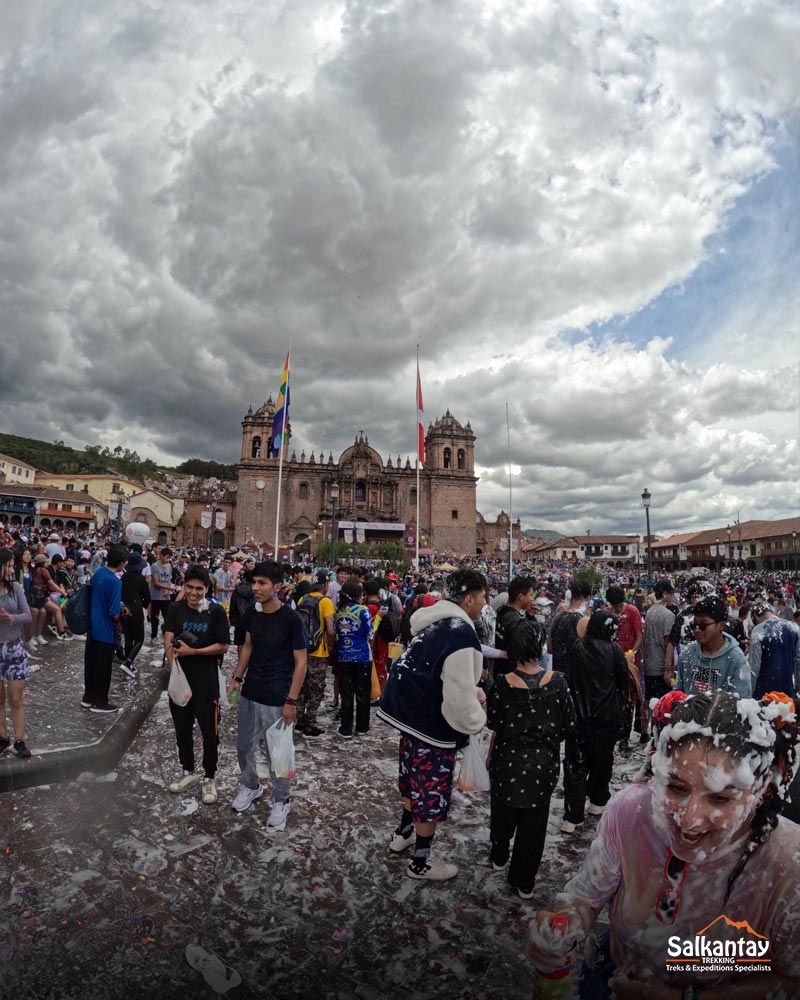

April 13 – 20: Holy Week
Holy Week is a Christian celebration that commemorates the Passion, Death, and Resurrection of Christ. In Cusco, Holy Week is not just a religious observance, but a deeply ingrained cultural experience that permeates the city’s life and traditions. From Palm Sunday, the streets come alive with the palpable devotion of the people. It is a time of unity and reflection, where the traditional blessing of the palms marks the beginning of a spiritually significant week.
The central day of the celebration is Holy Monday (April 14), when the city’s streets are filled with the grand procession of the Señor de los Temblores (Lord of the Earthquakes). This is a moment of profound reverence, as thousands of faithful gather in Cusco’s main square to receive the blessing of this revered Cristo Moreno. The devotion in the air is almost tangible, reflecting the deep-rooted faith of the Cusquenian people, an expression of spirituality that transcends the city’s borders and reaches the wider community through local media.
On Holy Thursday (April 17), the traditional Visita de las Siete Iglesias (Visit to the Seven Churches) takes place, leading the faithful on a pilgrimage through some of the city’s most sacred sites, commemorating the life and sacrifice of Jesus.
Good Friday (April 18) immerses the city in an atmosphere of solemnity and tradition. The Via Crucis (Stations of the Cross) begins in Plaza San Francisco, continues through Cruz del Papa in Saqsaywaman, and culminates in the vibrant medicinal plant fair held in the same plaza. Every ritual and procession is steeped in deep symbolism and meaning. Families gather around the traditional Twelve Dishes, a symbolic culinary tradition that represents communion and abundance, even in a time of fasting and contemplation.
Throughout Cusco, Holy Week is more than a religious celebration it is an experience that bridges past and present, faith and tradition, and community and history. It is a time to remember, reflect, and celebrate together, like one extended family, united by devotion and love.

May 3: Feast of the Cross or Cruz Velacuy
Cruz Velacuy is an ancient cultural tradition practiced in various Andean communities as an expression of devotion and religious syncretism. This celebration has deep roots in Holy Week and merges Catholic elements with pre-Columbian indigenous beliefs.
The primary purpose of this celebration is to pay homage to the crosses, sacred symbols found in various churches. During the nights of vigil, crosses from different temples, churches, and even family homes are venerated with music, dancing, food, and prayers in traditional Cusquenian gatherings. How did the Feast of the Cross Begin in Cusco? According to history, this celebration dates back to the colonial period when the Spanish introduced the Feast of the Cross as a means of discouraging indigenous people from worshipping their traditional deities, the Apus, and other sacred divinities of the region.
The earthquake that changed everything: The festival was not widely celebrated until 1950 when Cusco was struck by a powerful earthquake that devastated and severely damaged significant parts of the ancient city. In the aftermath, the population turned to their faith, which led to a surge in devotion and the growing prominence of the Feast of the Cross.
Since then, the people of Cusco eagerly awaited the early hours of May 2 to begin the vigil for the crosses at various temples, churches, and family homes that still possess a cross. Over time, this has become a tradition passed down from generation to generation. On the central day (May 3), the crosses are adorned with flowers, lights, and other decorative elements during Cruz Velacuy, creating an atmosphere that is both festive and spiritually solemn. Participants perform traditional dances, expressing their devotion through music and movement.
The celebration begins with the Feast Mass, where the cross is moved from its sanctuary to the home of the mayordomo (the person in charge of organizing the event), if it is a movable cross, it is greeted with dances and music. This is different from the immovable crosses, which cannot be relocated and are celebrated on-site. Guests and devotees bring candles and pray throughout the night. On the same day, the name of the person who will take charge of the celebrations for the following year is announced. The festival concludes with the Farewell Mass, after which a feast is held.

May 19: Lord of Torrechayoc in the City of Cusco
The celebration of the Lord of Torrechayoc, patron saint of the city of Urubamba, is one of the religious festivals of the Sacred Valley. The main day is a movable date within May, much like the locations where it takes place, ranging from the central square to churches and even the city’s stadium, a unique venue capable of hosting a large crowd. Devout cusquenians, as well as national and foreign tourists, gather with contagious joy to pay homage to the Lord of Torrechayoc on this central day.
The celebrations begin in the second week of May, on a Saturday, in honor of the Lord. The main event is a Mass dedicated to the Lord of Torrechayoc, which is not held in a church, but in a stadium. After the Eucharistic service, the faithful dance in homage to the Lord. Following about thirty dances, as evening falls, the followers perform a greeting to the Lord by visiting his temple, accompanied by fireworks and the burning of a castle built in honor of the Holy Patron.
There are also various myths surrounding the origin of his worship. One version claims that the tradition began in the mid-19th century when a large cross, bearing the image of this Lord at its center, was placed in the snow. According to the account, many pilgrims had different dreams and revelations in which the Lord of the Cross spoke to them about the intense cold and frosts suffered in his place. The local priest, having heard these reports, ordered the cross to be moved to Urubamba, where it is still venerated today.

May 26 to 29: Lord of Qoyllurit’i
In the region of Cusco, Peru, the annual celebration of the Lord of Qoyllurit’i is held, a highly revered Andean deity located in the area of the Ausangate snow-capped mountain. This celebration combines elements of Catholicism with indigenous beliefs, creating a unique experience that reflects the rich cultural diversity of the region.
The festivities begin on the day of the Holy Trinity with a procession towards the sanctuary of the Lord of Qoyllurit’i, where homage is paid to the miraculous image. During the night, around 200 dance groups offer their official greeting to the Lord, accompanied by dancers symbolizing mythical characters. Throughout the event, the faithful make a procession towards the snow-capped mountain with their flags and religious symbols.
One of the most significant moments of the celebration is the dance of the “ukukus” or “Andean bears”, who play an important role in the tradition. The “ukukus” are responsible for maintaining order during the traditional festivities, ensuring that visitors respect the sacred sites of the mountain.

The following day, the serenade includes dances and liturgical ceremonies in honor of the miraculous Christ. Afterward, a group of Queros (a Quechua community descended from the Inca era) heads towards the summits of the snow-capped mountain to search for the Star of the Snow and bring blocks of ice back to their communities. The procession culminates in Cusco, with the celebrations of Corpus Christi, filling the streets with music and color.
According to the legend… Local legends about the Lord of Qoyllurit’i recount the miraculous appearance of a Christ image on the rock of the snow-capped mountain. This image is considered sacred, and it is believed that those who venerate it with devotion receive blessings and divine favors.
This celebration is a fascinating example of cultural syncretism: the fusion of indigenous religious customs with Catholicism in the festival of the Lord of Qoyllurit’i. Music, dance, and ancestral rituals blend with Christian ceremonies to create a vibrant and spiritual event.
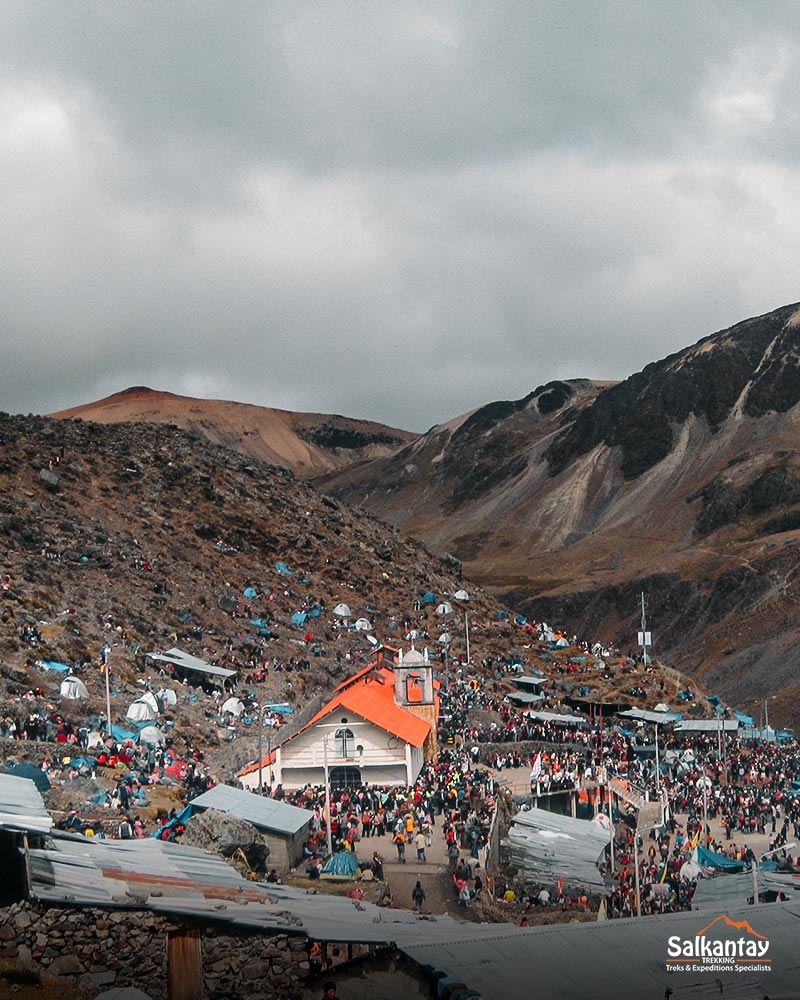

June 19: Corpus Christi in Cusco
The Corpus Christi celebration in Cusco, deeply rooted in the city’s imperial tradition, merges the customs of the indigenous people into a stunning spectacle that captivates both locals and visitors.
During Inca times, the festivities honored ancestors and gods such as Taita Inti (the Sun) and Killa (the Moon Goddess). The main celebration, dedicated to Inti, often involved processions of mummies of high-ranking rulers. With the arrival of the Spanish and Catholicism, these remains were replaced by images of the Virgin and other Catholic saints. In this way, the tradition of what we now know as Corpus Christi Cusqueño was established.
Today, it is one of the most important festivals in the region’s religious calendar and has been declared a cultural heritage of Peru. Corpus Christi is celebrated 9 weeks after Holy Thursday (from Holy Week), so in 2025, it will take place on June 19. The celebration begins the day before the main procession. On the eve of the celebration, the saints depart from their churches, accompanied by parishioners and regional music, traveling long distances to reach the Santa Clara Arch and San Pedro Church. The procession culminates at the cathedral, where a Quechua Mass is held, followed by the procession of the saints, dances, and celebrations lasting until the octave. This event is filled with immense passion, and the saints are dressed in their finest attire to be worshipped by devoted believers.
PLAN: This celebration is usually very crowded. Plan your day to arrive early to the event. If you wish to have a privileged view, make a reservation well in advance at one of the balcony restaurants around the Plaza de Armas.
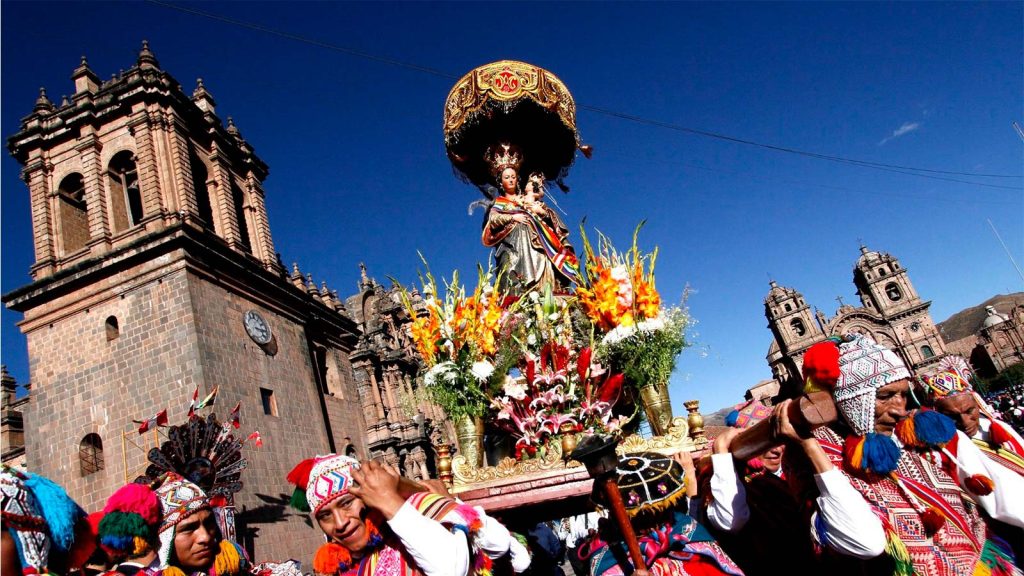
June 24th: Inti Raymi
Inti Raymi, meaning “Festival of the Sun” in Quechua, is an ancient Incan celebration that honors Inti, the Sun God. Every year in the Andes, especially in Peru, this commemoration takes place to honor the deity, who held a significant role in Incan cosmology, symbolizing the source of life and energy for their communities.
The Inti Raymi ceremony was of great importance to the Incas since pre-Columbian times. Originally, the festival was linked to the harvest and the winter solstice in the Southern Hemisphere, marking the beginning of a new agricultural cycle. The celebration was banned with the arrival of the Spanish, colonization, and the imposition of Catholicism. However, some communities managed to preserve it secretly until it was revitalized and transformed into a public event in the mid-20th century.
Every year, many national and international tourists visit our city in June, as it is Cusco’s jubilee month and offers the opportunity to witness grand celebrations. Many even come exclusively to attend the Inti Raymi ceremony on June 24th. The dances, music, processions, and theatrical representations reenact Incan traditions and rituals. At the Sacsayhuamán fortress, near the city of Cusco, large ceremonies are held in honor of the Sun, giving thanks for future harvests.

A journey through history: Inti Raymi is a unique opportunity to delve into the history of the Incas and discover their way of life. Book in advance! June is the most tourist-heavy month of the year in Cusco, so don’t get caught off guard and plan your trip carefully to fully enjoy this special day.
During Inti Raymi, participants adorn themselves in traditional clothing, decorate themselves with vibrant textiles and jewelry, and immerse themselves in the spirituality of Incan culture. The celebration serves as an occasion to preserve and spread ancestral customs while promoting cultural tourism and pride in Peruvian identity.
Inti Raymi showcases the deep connection between the Andean peoples and nature, as well as their spiritual beliefs. The celebration not only honors the Sun God but also highlights the resilience and strength of indigenous communities in overcoming historical challenges. Inti Raymi remains an important event today, honoring the cultural wealth of Peru and Incan heritage.



July 15: Virgen del Carmen – Paucartambo, Pisac, and Huarocondo
Paucartambo is a picturesque town located two hours by car from the city of Cusco, Peru. It is known for being the setting of one of the most important festivals in the region: the Feast of the Virgen del Carmen.
This annual celebration, held every July, is a blend of Catholic religious traditions and Andean cultural elements. During the festival, the image of the Virgen del Carmen is taken in procession through the streets of the town, accompanied by folk dances, music, colorful costumes, and picturesque masks.
The Feast of the Virgen del Carmen in Paucartambo is famous for its traditional dances, such as the “qapac qolla,” “pablitos,” and “chunchachas,” performed by local dance groups. These dances tell the stories and legends of the region and are an integral part of the celebration. Additionally, Paucartambo is a beautiful town that retains its colonial architecture, featuring white buildings with blue balconies. All of these elements come together to make the festival a stunning explosion of colors in a charming setting.
The Feast of the Virgen del Carmen in Paucartambo is considered one of the most important and colorful celebrations in the Cusco region, attracting thousands of people from various parts of the country and the world to witness and participate in this unique cultural experience. In addition to the religious and cultural activities, the festival also includes fairs, artisan markets, and social events where locals and visitors can enjoy local cuisine and engage in various festive activities.
Huarocondo (in the Anta province) and Pisac (in the Sacred Valley) are also places where the Feast of the Virgen del Carmen is a significant occasion. During this celebration, religious activities such as masses and processions are held, alongside cultural events like traditional dances and fairs.
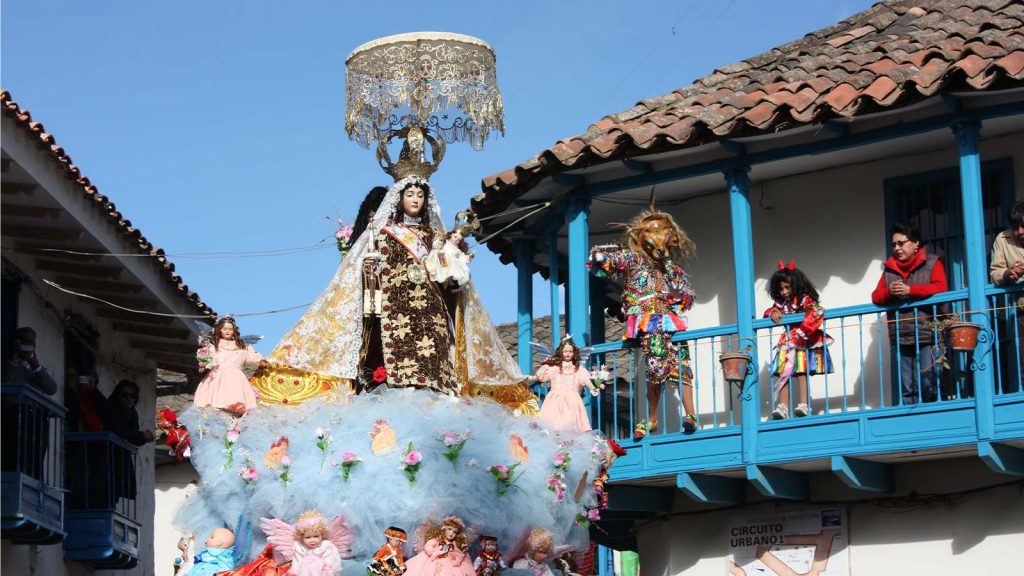
August 1st: Pachamama Day
Pachamama is a central figure in many indigenous cultures of Latin America, especially in the Andes. She represents Mother Earth or Mother Nature and is venerated in various rituals and ceremonies that express gratitude for her essential role in our lives. In Cusco, Pachamama holds great significance due to the tradition inherited from the Incas, who believed in nature gods such as the sun (Inti) and the moon (Killa).

In some communities, the month of August is considered a special time to honor and show gratitude to Pachamama. On this day, various places hold ceremonies, rituals, and offerings to honor and thank nature for the resources, fertility of the land, and abundance it provides. These practices often involve the burning of offerings such as coca leaves, food, and other symbolic items.
It is important to note that the traditions and practices related to Pachamama may vary across different communities and regions. The connection to the land and nature is a fundamental aspect of many indigenous cultures, and the veneration of Pachamama is an expression of this spiritual and cultural connection.


September 14th: Lord of Huanca
The Lord of Huanca is a religious figure venerated in the region of Cusco, Peru. His sanctuary is located in the district of San Salvador, approximately 48 kilometers northeast of the city of Cusco. This sacred site has gained significance as a center of pilgrimage and devotion.
According to tradition, the story of the Lord of Huanca dates back to colonial times, when the figure of Christ is said to have appeared in a cave in the area. Since then, the place has attracted thousands of pilgrims seeking miracles and spiritual protection. The main festival in honor of the Lord of Huanca takes place on September 14th, drawing devotees from various parts of the region.
The journey to the sanctuary is known for its natural beauty, as pilgrims cross mountainous landscapes before reaching the cave where the Lord of Huanca is venerated. Devotion to this religious figure has deeply rooted itself in the local culture, making it a site of great spiritual and cultural importance in the Cusco region. Thousands of Cusqueños visit the sanctuary to undertake their pilgrimage.

September 30th: Saint Jerónimo
The festival in honor of Doctor Patron Saint Jerome is held annually over four days, from September 27th to 30th, with the latter being the main day of the celebration. The image of Saint Jerome is processed twice a year, participating both in the Cusco Corpus Christi festivities and in its patronal celebration in the district of San Jerónimo, Cusco.
The organization of this festivity is entrusted to the mayordomo, known as “carguyoq,” who takes responsibility for ensuring the event is carried out. This role is typically undertaken by a couple committed by faith and devotion to collaborate in organizing the celebration. Additionally, there is a central carguyoq, born in San Jerónimo, who is responsible for providing the attire for the image of Doctor Patron Saint Jerome and presiding over the central mass in his honor.
These mayordomos oversee the order of the celebration in conjunction with the Brotherhood of Knights from the left and right sectors (representatives of the parish and the District Municipality of San Jerónimo) and the Folk Dance Association of San Jerónimo, which gathers all participating dance troupes. These groups meet in advance to coordinate the details of the festival’s activities.
During the four days of the celebration, the central carguyoq must provide breakfast, lunch, and dinner to his “hurk’ados” (collaborators who contribute financially), thus seeking social recognition and prestige as the main contributor to the event.
The activities in honor of Saint Jerome include an “entrada” (entrance), where the dance troupes gather at the carguyoq’s house, a parade from the Cajonahuaylla sports field to the Church of San Jerónimo, and celebrations in the square with food, dance, and music reserved for each troupe and their guests.

On November 1st, the Day of All Saints is commemorated, both in Peru and Catholic-rooted nations across Latin America and globally. Initially, this celebration was closely associated with saints, but over time it has evolved.
Originally observed by the Catholic faithful, this celebration consisted of showing respect for the souls of those who had been beatified. Hence, it is called the Day of All Saints, to honor the blessed and canonized saints who enjoy eternal life with their Creator. However, over time, the meaning of this holiday has changed to also pay tribute to loved ones who are no longer with us.
The main activity on November 1st is the visit to cemeteries. Families gather to remember their deceased loved ones and bring offerings to decorate the graves, such as flower bouquets, written letters, balloons, or food and objects that the person enjoyed so they can be enjoyed wherever they are.
In Cusco, the ceremony of baptizing the tantawawa, a baby made of bread, takes place. This family tradition, which is gradually disappearing, is being preserved. During the ceremony, a satire is performed with a false priest and his assistant, who during the “mass” make the godparents promise to fulfill a series of vows for their “godchildren.” After the ceremony, the party and dancing begin, where the tantawawas, filled with sweets and chocolates, are given to girls, while bread horses are gifted to boys. The tantawawas and the colorful “bread horses” are irresistible to the youngest members of the family, and in many places, enormous tantawawas are prepared.
Buy your Pan Wawa: At local markets like Mercado San Pedro or traditional bakeries, you can purchase this delicious and fun bread. Its curious shape will surprise you!
As for the typical food on the Day of All Saints, it is very common to eat pork. In various markets and squares, such as Plaza Tupac Amaru, you will find improvised kiosks offering delicious roasted suckling pig, a dish consisting of oven-roasted pork, as well as tamales made from local Cusco corn.

November 1st: All Saints Day
On November 1st, the Day of All Saints is commemorated, both in Peru and Catholic-rooted nations across Latin America and globally. Initially, this celebration was closely associated with saints, but over time it has evolved.
Originally observed by the Catholic faithful, this celebration consisted of showing respect for the souls of those who had been beatified. Hence, it is called the Day of All Saints, to honor the blessed and canonized saints who enjoy eternal life with their Creator. However, over time, the meaning of this holiday has changed to also pay tribute to loved ones who are no longer with us.
The main activity on November 1st is the visit to cemeteries. Families gather to remember their deceased loved ones and bring offerings to decorate the graves, such as flower bouquets, written letters, balloons, or food and objects that the person enjoyed so they can be enjoyed wherever they are.
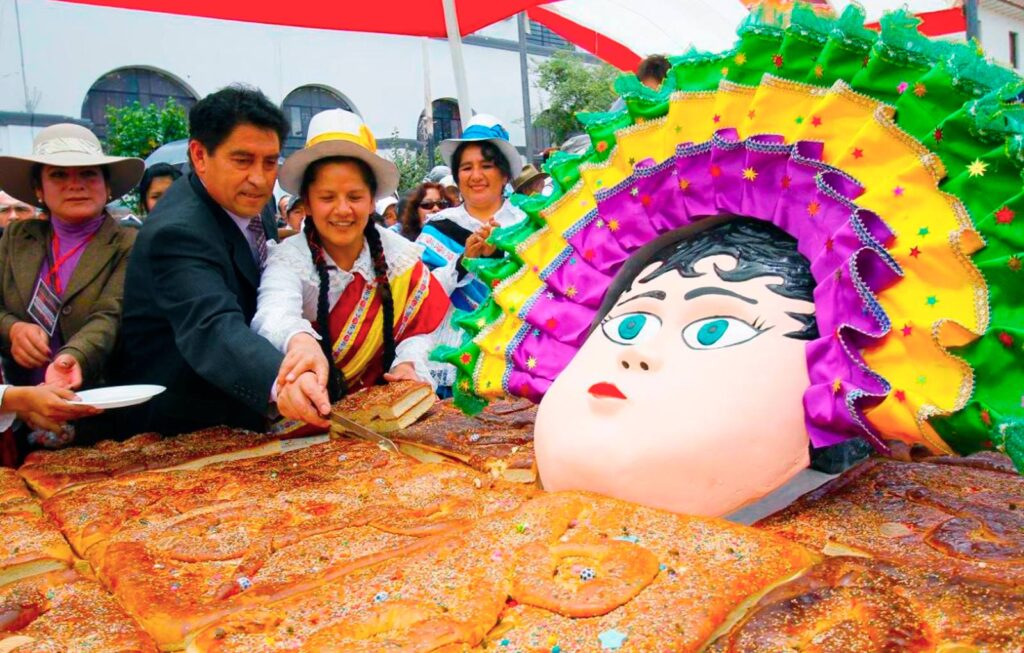
In Cusco, the ceremony of baptizing the tantawawa, a baby made of bread, takes place. This family tradition, which is gradually disappearing, is being preserved. During the ceremony, a satire is performed with a false priest and his assistant, who during the “mass” make the godparents promise to fulfill a series of vows for their “godchildren.” After the ceremony, the party and dancing begin, where the tantawawas, filled with sweets and chocolates, are given to girls, while bread horses are gifted to boys. The tantawawas and the colorful “bread horses” are irresistible to the youngest members of the family, and in many places, enormous tantawawas are prepared.
Buy your Pan Wawa: At local markets like Mercado San Pedro or traditional bakeries, you can purchase this delicious and fun bread. Its curious shape will surprise you!
As for the typical food on the Day of All Saints, it is very common to eat pork. In various markets and squares, such as Plaza Tupac Amaru, you will find improvised kiosks offering delicious roasted suckling pig, a dish consisting of oven-roasted pork, as well as tamales made from local Cusco corn.
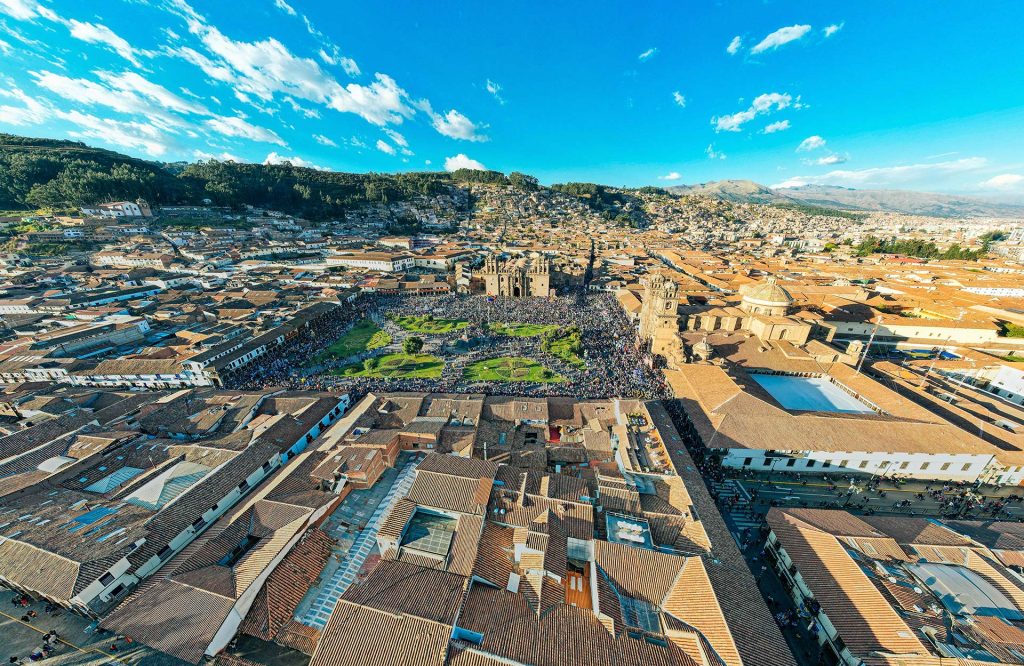
December 24th: Santurantikuy
The city of Cusco, Peru, hosts the traditional craft fair called Santurantikuy. This fair takes place in the Plaza de Armas of Cusco on Christmas Eve. “Santurantikuy” comes from the Quechua language and means “sale of saints.” Local artisans gather during this event in the main square to sell a wide variety of items, such as crafts, toys, clothing, and especially religious figures and objects related to Christmas.
One of the highlights of Santurantikuy is the sale of nativity scenes or “pesebres” (depictions of the birth of Jesus) and the sale of Manuelitos, figures of the Baby Jesus characterized with Andean features. Other religious figures used to decorate homes during the Christmas season, such as the Virgin Mary or the Three Wise Men, can also be found at this fair.
Numerous local visitors and tourists flock to the fair in search of unique, traditional handmade products for their Christmas celebrations. Santurantikuy is not just a market but also offers cultural activities, music, and events for the whole family.
Enjoy this unique Christmas event, which perfectly combines the spirit of Christmas and key elements of Catholicism with Andean tradition and the typical customs of the region.
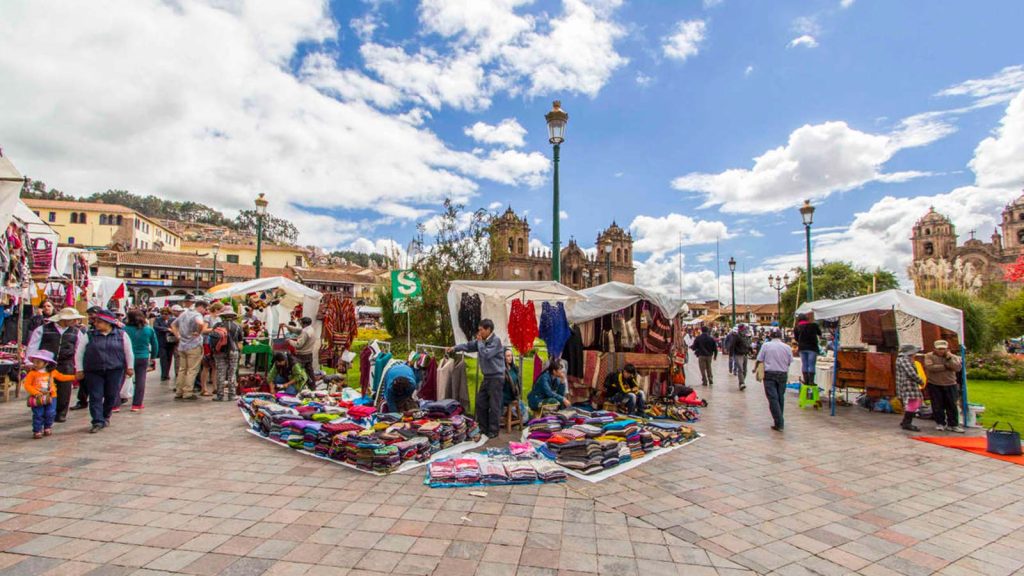
December 31st: New Year’s Eve
Celebrating New Year’s Eve in Cusco is a one-of-a-kind experience that blends ancient cultural traditions with the festive energy of the imperial city. During this time of year, Cusco’s Plaza de Armas transforms into a vibrant gathering spot, adorned with festive lights and decorations that fill the air with a joyful spirit. Both locals and visitors come together here to welcome the new year with live music and a spectacular fireworks display.
Beyond the festivities in the Plaza de Armas, Cusco offers a wide range of options for celebrating New Year’s Eve. From elegant dinners in high-end restaurants to lively street parties and exclusive events in bars and nightclubs, there is something for every taste and preference. Travelers can immerse themselves in the city’s nightlife or simply enjoy the festive atmosphere while strolling through illuminated streets and bustling markets filled with local goods and souvenirs.
A variety of rituals are commonly performed to ensure good luck in the new year. Here are a few:
- Wearing yellow clothing: Yellow is associated with good fortune and prosperity, so many people dress in yellow or wear yellow accessories on this day.
- Eating 12 grapes: Each grape represents a wish or resolution to be fulfilled in the coming year.
- Walking around the block with a suitcase: Taking a lap around the neighborhood with a suitcase at midnight is believed to attract new travels and adventures.
- Hiding under the table: Some people slip under the table at midnight or eat their grapes while doing so to attract love in the new year.
- Throwing lentils: Due to their round, coin-like shape, lentils are seen as a symbol of wealth. Many people toss them into the air to invite a “rain of money” for the year ahead.
For those seeking a more peaceful experience, Cusco’s surroundings offer countless opportunities to explore nature and history. From excursions to nearby Inca ruins to treks through the breathtaking landscapes of the Andes, there are many ways to connect with the beauty and serenity of the region.
Celebrate New Year’s Eve at Machu Picchu: Many travelers choose to welcome the new year at Machu Picchu, embracing the start of a new cycle surrounded by nature and one of the most spiritually charged places on Earth. Visitors can take in breathtaking views, breathe in fresh mountain air, and marvel at the rich history and culture of the region while stepping into the new year.



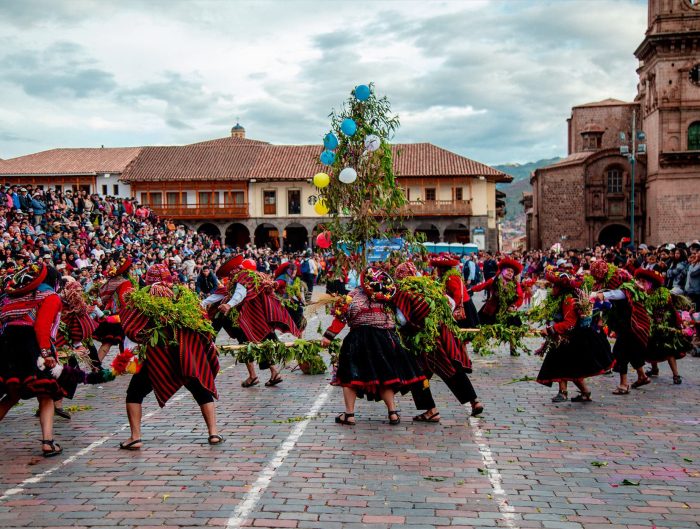






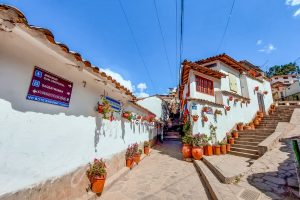



Leave A Reply